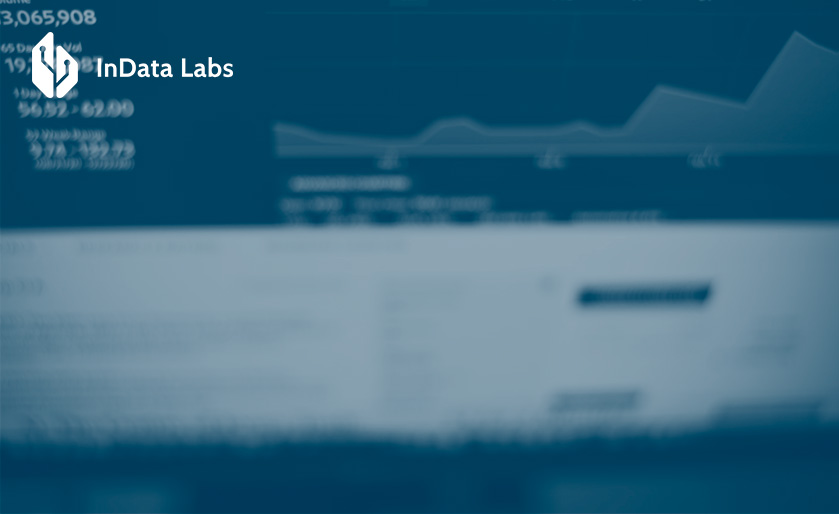Organizations are constantly looking for ways to extract value from their data. Most businesses collect data first and then plan how to best use it. Big data and business analytics, two subfields of business intelligence, constitute the fundamental essence of this emerging field of business data.
Over the past two decades, the business intelligence software industry has undergone a significant transformation. The underlying objective of achieving a wiser, more optimized business has not changed, but the strategies for achieving it have.
Nearly 1.7 MB of new information is created every second, per studies by Forbes. It shows that data is everywhere, and we consume it more than ever. Analysis of all this data has already started to yield insightful results for the enterprise.

Source: Unsplash
Technical knowledge to quickly process vast amounts of data and business analytics to define what provides value from the customer’s perspective are two skills required to derive value from such data.
Big data analytics and business analytics are two commonly used terminology when discussing scattered data and how to gain insights from it. Even though the two terms are different, they have much in common. Both are seeking information through data analysis.
What is Big data?
Big Data analysis refers to gathering, handling, and analyzing vast amounts of data to enhance business outcomes. Organizations use it to identify the market, consumer, social, traditional, geographic, and other trends and any ensuing outliers.
It enables large data aggregation and the blending of your internal measurements with any pertinent environmental data you may find. It aids in cost savings, speedier decision-making, and trend prediction.
You can classify Big data into three data structures.

While these three concepts are technically valid at all levels of analytics, they are crucial to analyze Big data.
Understanding where raw data comes from and how it must be processed before the analysis becomes even more necessary when analyzing large amounts of Big data. Because there is so much data, information extraction must be efficient to be worthwhile.
The structure of the data determines how to work with it and what insights it might yield.
Unstructured data
Structured data is only sometimes neatly packed and sorted with instructions on how to use it. Expert says that there is only 20% of structured data. All other data is unstructured.
Unstructured data is all of your disorganized information. It includes photos, movies, audio files, text, and other media. The dataset must be interpretable to yield anything like relevant information. However, the work might be far more beneficial than the easy equivalent of processing unstructured data.

Source: Unsplash
Almost all computer activities generate unstructured data. Nobody transcribes their phone calls or assigns semantic tags to every tweet they post. While organized data saves time in an analytical process, it takes time and effort to make unstructured data more readable.
The ETL method for structured data is straightforward. Before loading into a database, it is purified and validated at the transform stage. However, with unstructured data, the latter is significantly more difficult.
Semi-structured data
Semi-structured data exists between structured and unstructured data. It usually converts to unstructured data with metadata attached. It can be inherent data acquired, such as time, location, device ID stamp, email address, or a semantic tag added afterwards to the data.
Assume you take a picture of your brother with your phone. It records the photo-taken time, the GPS data at the capture time, and the device ID. If you use a web service for storage, such as iCloud, your account information is associated with the file. The actual content is unstructured in this instance. Still, some components allow the data to be categorized based on specific criteria.
Structured data
Structured data is the most user-friendly. It is well-organized, with dimensions determined by predefined parameters. It is the simplest to understand and apply.
Consider spreadsheets; each item of information organizes into rows and columns. It is easy to find specific elements defined by distinct variables. Because structured data is already substantial numbers, a program can sort through and collect data easily.
Structured data adheres to schemas that are effectively road maps to specific data points. It is the schema’s job to describe the location of each datum and what it implies.

Source: Unsplash
A payroll database will include employee identification, pay rate, hours worked, and how compensation is distributed, among other things. The schema defines all these dimensions for every application in use.
The program will not have to sift through data to figure out what it means; instead, it will be able to go right to work collecting and processing it.
4v’s of Big data analytics
There are four essential factors for firms intending to adopt Big data analytics systems. You must be able to process a large amount of data from various sources at quick rates while being confident in the outcome’s reliability. The four V’s, or primary elements of Big data, are as follows:

Volume
Numerous sources, including social media, commercial transactions, and machines, generate the volume of data.
Variety
Variety refers to the different categories of data driven. It is possible to use music, images, log files, organized or unstructured data, and even natural language text.
Velocity
The rate at which data generates is known as velocity. It helps indecision-making and to give competitive advantages.
Veracity
The authenticity of the data is veracity. With so much dataset pouring in, assuring data quality is a huge concern. As a result, Big data processing necessitates checks and balances to maintain data quality.
How does Big data relate to business intelligence?
Big data analytics and business intelligence (BI) seem similar but are different. Business intelligence is a subset of Big data analytics.

What is business analytics?
Methods and technologies used to access and evaluate an organization’s data are business analytics. In other words, it checks the company’s operational and financial characteristics to generate crucial insights that enhance business strategy.
It focuses on predictive analytics, which projects future business activities utilizing precedent and historical data. Businesses can create predictive models with variable inputs to test ideas and projects and base decisions on them.

Source: Unsplash
Simply, business analytics is an effort to use data and statistics to create future business practices that are optimized. Combining all the relevant information that is currently available, it provides users with a high-level overview of their business.
The entire method has numerous variations to online sources, but how to do it involves the following elements:
- Determine the issue
- Gather enterprise data
- Cleanse and process the data
- Data analysis and reporting
- Predictive analytics models
- Model deployment
- Assess efficiency.
Business analytics enables companies to make better decisions by considering their consumers’ perspectives. It encompasses anything from designing application feature sets to rules defining the organization’s performance or customer happiness. Business analytics is likewise concerned with monitoring and reporting data to make better decisions.
Business analytics interacts with the Big data paradigm to define metrics and projections that ultimately translate to customer value. Business analytics exists outside the Big data paradigm because it can operate with fewer data. It only requires a relational database or an excel file to perform meaningful event analysis.
The bases of business analytics are domain and customer expertise. It operates on a much bigger scale while remaining extremely close to clients and the business. Big data implementation can be a part of business analytics if the data that serves as the foundation is present in the vast data ecosystem.

Similarities between Big data analytics and business analytics
There are many similarities between business analytics and Big data, which is why people mix them up. Let’s have a look at the similarities between them.
- Data
- SQL knowledge
- Insights
Data
Data is the crucial building block of business analytics and Big data. Business analytics is not subject to the same strict limitations as Big data, which only deals with enormous volumes of very diverse data. It focuses more on the business value standpoint and anything that aids in generating value.
Source data in business analytics stored in relational databases can be known as Big data. Business analysts that work with Big data sources may employ a querying engine like Presto or a business intelligence application service like Tableau.
If business analytics can’t obtain the data they need, they must also find other means of data acquisition. It could involve developing performance testing or starting a customer feedback survey.

Source: Unsplash
SQL knowledge
SQL knowledge is a crucial competency that acts as a relationship between Big data and business analytics. Even data engineers today spend most of their days writing SQL queries because many Big data platforms offer querying engines and processing capabilities utilizing SQL.
A business analyst must be familiar with SQL. To explore data in conventional databases, he/she will use SQL. You can use excel files with SQL to create reports. Additionally, it is essential since SQL is the primary method for interacting with large data systems, which business analytics do.
Insights
The Big data paradigm and traditional business analytics are both concerned with gaining insights from data. Deriving insights from a Big data platform can be the final step following a succession of complex data pipelines.
For business analytics, this might be as simple as creating reports on top of Excel or a database or as complex as establishing the need for a Big data team to design data pipelines to get there.

Source: Unsplash
Difference between Big data and business analytics
Big data and business analytics have a lot in common: they both take a chunk of data, filter it up, and give output as some new form of cohesive, valuable information. However, they are distinct ideas with some distinctions:
Business analytics focuses on operational statistics and internal analytics. Big data contextualizes operational data within the context of the much broader industry and market data.
Big data has a considerably more significant barrier to entry than business analytics due to the complexities that come with the volume and variety of data. The most basic form is achievable with Microsoft Excel and some basic mathematics understanding. The most basic Big data analytics necessitates relatively advanced data science, which requires experts from a data science company.
To get started with Big data analytics, you can search through the top Big data companies and then read more about such processes as data manipulation, source compatibility, data translation and interpretation, and other sophisticated ideas. We’ll go through each skill set in greater detail later.
Business analytics is human-centered, whereas Big data analytics demands too much processing and attention to process without automated techniques. The latter requires machine assistance at nearly every stage, from extract, transform, and load to analysis, visualization, and predictive analytics.
For most of its history and the present application, business analytics has been and continues to be defined by human interpretations taken from data.
What is the difference between Big data analytics and business intelligence?
Both of these words are becoming increasingly important in today’s company processes. Here are some key distinctions between them.
- The primary goal of Big data is to acquire, process, and analyze data, both structured and unstructured, to improve consumer outcomes, while business intelligence is to assist businesses in making better decisions. By extracting information directly from the data source, business intelligence aids in the delivery of reliable reports.
- Business intelligence helps to find solutions to already known business questions, but Big data aids in discovering new questions and answers.
- The principle of business intelligence is merging all business data sets into a single server, from which the data is analyzed offline after being saved in a platform or environment known as a Data Warehouse. The data sets are organized in a relational database, with additional indexes and access methods to the warehouse tables. On the other hand, data is kept on a distributed file system rather than on a single server in Big data.
- Big data refers to enormous data sets frequently found within enterprises. On the other hand, business intelligence refers to using this data for analytical purposes, from which actionable information can be derived to make better business decisions.
How to leverage data analytics and business analytics?
Using Big data to improve your business analytics necessitates a high-level skill set from data scientists. What if we combine Big data analytics and business intelligence analytics skills?
The most significant distinction between the two is knowledge of R and Python, the two most popular data manipulation programming languages. Working with massive amounts of data necessitates optimizing the code used to process it, and those languages have emerged as the top dogs in the analytics sector.
It is in addition to the standard coding abilities required of professionals, such as SQL. Industry experience is a significant differentiator between Big data for business analytics and simple methodologies. That prior information assists analysts in determining which datasets are helpful and which are not.
Big data implementation necessitates the use of several tools. Hadoop and comparable technologies enable data processing and storage distribution without requiring additional hardware, allowing software to scale up its analytical capabilities.
Access to relational databases and other data sources provides more context for internal data, allowing for more accurate forecasts and models.
Conclusion
Big data is a new focus area that uses open-source software stacks, hardware designs for higher parallel computing, software and hardware for storing data, and APIs to process the idea of enormous data sets. As data affects every aspect of our lives today, there is a high demand for professionals who can interpret it.
In recent years, Big data is associated with data science for businesses as well. Big data and business analytics have some similarities but are independent areas. The similarity between these two streams is their reliance on data and skill sets in SQL.
Business analytics can benefit from the addition of Big data analytics. Big data refers to the vast amounts of information stored in your organization, while business intelligence makes sense of it for decision-making.
Big data analytics according to your business needs
If you feel the urge to implement Big data analytics or BI, get in touch with us and our consultants will guide you through the most appropriate strategy to implement top-notch technology today.


